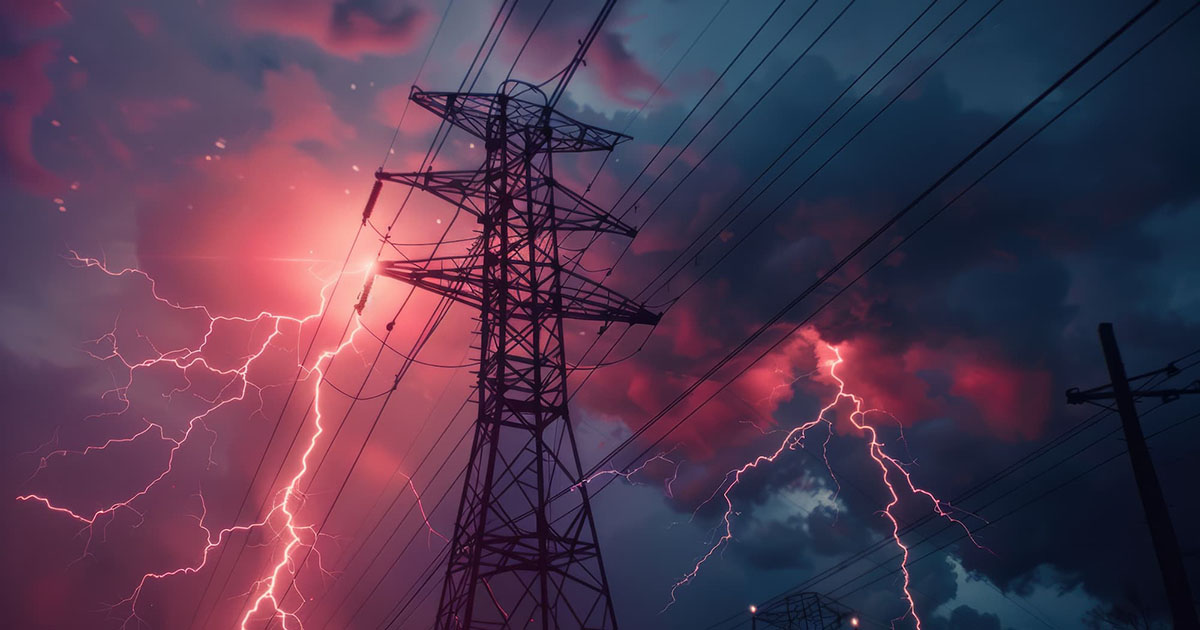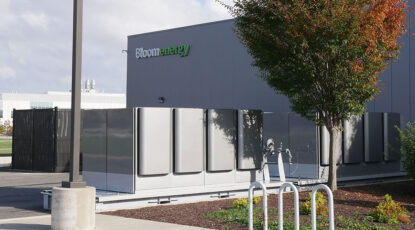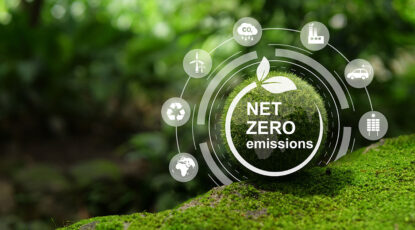Emergency power, supported by a robust power generation system, has become paramount in recent years, especially as severe weather events and energy crises have exposed vulnerabilities in our power infrastructure. Major power failures have left millions without electricity for days, highlighting the critical need for reliable backup systems. As these challenges grow more frequent, emergency power is no longer just a precaution—it’s a necessity for ensuring safety, security, and economic stability in our increasingly interconnected and technologically dependent world.
The recent declaration by the U.S. Energy Information Administration highlights the critical importance of addressing rising power consumption levels, stating that the U.S. is projected to reach record highs in 2024 and 2025, underscoring the need for robust emergency power systems to ensure uninterrupted service during peak demand and unforeseen outages.
What is considered emergency power?
Emergency power refers to backup power systems designed to provide electricity during interruptions of the primary power supply. These systems are essential for maintaining critical operations in various settings, such as cities, businesses, and national infrastructure, during power outages caused by natural disasters, equipment failures, or other emergencies.
Ensuring City Resilience with Urgent Power
Cities are hubs of economic, social, and cultural activities, making the availability of emergency power and a reliable power generation system crucial. Urban centers rely heavily on electricity to power infrastructure, healthcare facilities, public transportation, and communication systems. When a power outage occurs, the impact can be widespread and severe, affecting millions of residents and disrupting daily life.
Ensuring Public Safety
Emergency power systems in cities are vital for maintaining public safety. Traffic lights, streetlights, and surveillance systems depend on a constant power supply. During a blackout, standby power ensures these systems remain operational, preventing accidents and maintaining order.
Healthcare Services
Hospitals and healthcare facilities cannot afford to lose power, even temporarily. Emergency power is essential for running life-saving equipment, refrigeration for medications, and ensuring the overall functionality of medical facilities. In natural disasters or large-scale emergencies, having reliable standby power can be the difference between life and death. Backup power supplies for hospitals, as well as other mission-critical facilities, are required to adhere to the standards set forth by the National Fire Protection Association (NFPA).
Communication and Information Systems
In today’s digital age, communication networks are the backbone of urban life. Emergency power ensures these networks remain up and running, allowing residents to stay informed and connected during crises. This includes everything from mobile networks to internet services and emergency broadcast systems.
Reliable Emergency Power Systems for Business Continuity
For businesses, a reliable power supply is not just a convenience but a necessity. Power outages can lead to significant financial losses, disrupt operations, and damage reputations. Emergency power systems are a crucial investment for businesses of all sizes.
Continuity of Operations:
In the event of a power outage, businesses with emergency power systems can continue their operations without interruption. This is especially important for industries such as finance, data centers, manufacturing, and retail, where even a short downtime can result in substantial financial losses.
Data Protection
Businesses today generate and rely on vast amounts of data. Emergency power is critical for protecting this data, ensuring that servers, storage devices, and IT systems remain operational during power outages. This helps prevent data loss, which can be costly and time-consuming to recover.
Customer Trust and Satisfaction
Maintaining customer trust and satisfaction is essential for any business. Emergency power systems ensure that customer service operations, such as call centers and online services, remain functional during outages. This reliability fosters trust and can set a business apart from its competitors.
Ensuring Stability: Emergency Power Supply for Nations
At a national level, emergency power systems are integral to national security, economic stability, and disaster resilience. Governments must prioritize the development and maintenance of robust emergency power infrastructures to safeguard their citizens and economies.
National Security
National security agencies, including defense installations, intelligence agencies, and law enforcement, require a constant power supply to function effectively. Emergency power systems ensure these critical operations continue uninterrupted, even during widespread power outages.
Economic Stability
A nation’s economy relies heavily on a stable power supply. Emergency power systems support the continuity of industrial activities, financial transactions, and other economic activities. This stability helps prevent economic downturns that can result from prolonged power outages.
Disaster Resilience
Natural disasters such as hurricanes, earthquakes, and floods can cause extensive damage to power infrastructures. Emergency power systems enhance a nation’s resilience to such disasters by ensuring that essential services, including healthcare, communication, and public safety, remain operational. This capability is crucial for effective disaster response and recovery efforts.
Technological Innovations in Emergency Power Systems
In recent years, emergency power and power generation systems have seen significant technological advancements. These innovations enhance the efficiency, reliability, and sustainability of emergency power systems.
Renewable Energy Integration
Renewable power sources, such as solar and wind, are being increasingly integrated into emergency power systems. This not only reduces dependence on fossil fuels but also ensures a more sustainable and resilient power supply. Battery storage systems complement renewable energy by storing excess power for use during outages. Microgrid systems also enhance sustainability by reducing reliance on fossil fuels and lowering carbon emissions. While diesel generators provide a reliable source of electricity during power outages, they have several drawbacks, particularly in terms of their environmental impact.
Smart Grids
Smart grids leverage advanced technologies to monitor and manage the flow of electricity more effectively. They can detect power outages quickly and automatically switch to standby power sources, minimizing downtime. Smart grids also facilitate the integration of distributed energy resources, enhancing the overall reliability of the power supply.
Microgrids
Microgrids are localized power grids that can operate independently from the main grid. They are particularly useful for providing power to critical facilities such as hospitals, military bases, and emergency response centers. Microgrids can incorporate renewable energy sources such as solar, wind, and hydroelectric power. These clean energy sources produce electricity without emitting harmful pollutants or greenhouse gasses, reducing environmental impact and mitigating climate change.
Challenges and Solutions in Implementing Emergency and Standby Power
While the importance is clear, implementing these systems comes with its own set of challenges. Addressing these challenges is essential for maximizing the effectiveness of emergency power systems.
High Initial Costs
Installing emergency power systems can be costly. However, the long-term benefits of enhanced resilience and operational continuity justify this investment. Governments and businesses can explore financing options, subsidies, and incentives to offset initial costs.
Maintenance and Testing
Regular maintenance and testing are crucial for ensuring that emergency power systems function correctly when needed. Establishing strict maintenance schedules and conducting routine tests can help identify and address potential issues before they become critical.
Training and Awareness
Personnel responsible for operating emergency power systems must be adequately trained. Regular training programs and drills can ensure that staff prepare to respond effectively during power outages. Raising awareness among stakeholders can also support its implementation and maintenance.
Case Studies Highlighting the Importance of Emergency Power
Examining real-world examples underscores the critical role of emergency power in various scenarios.
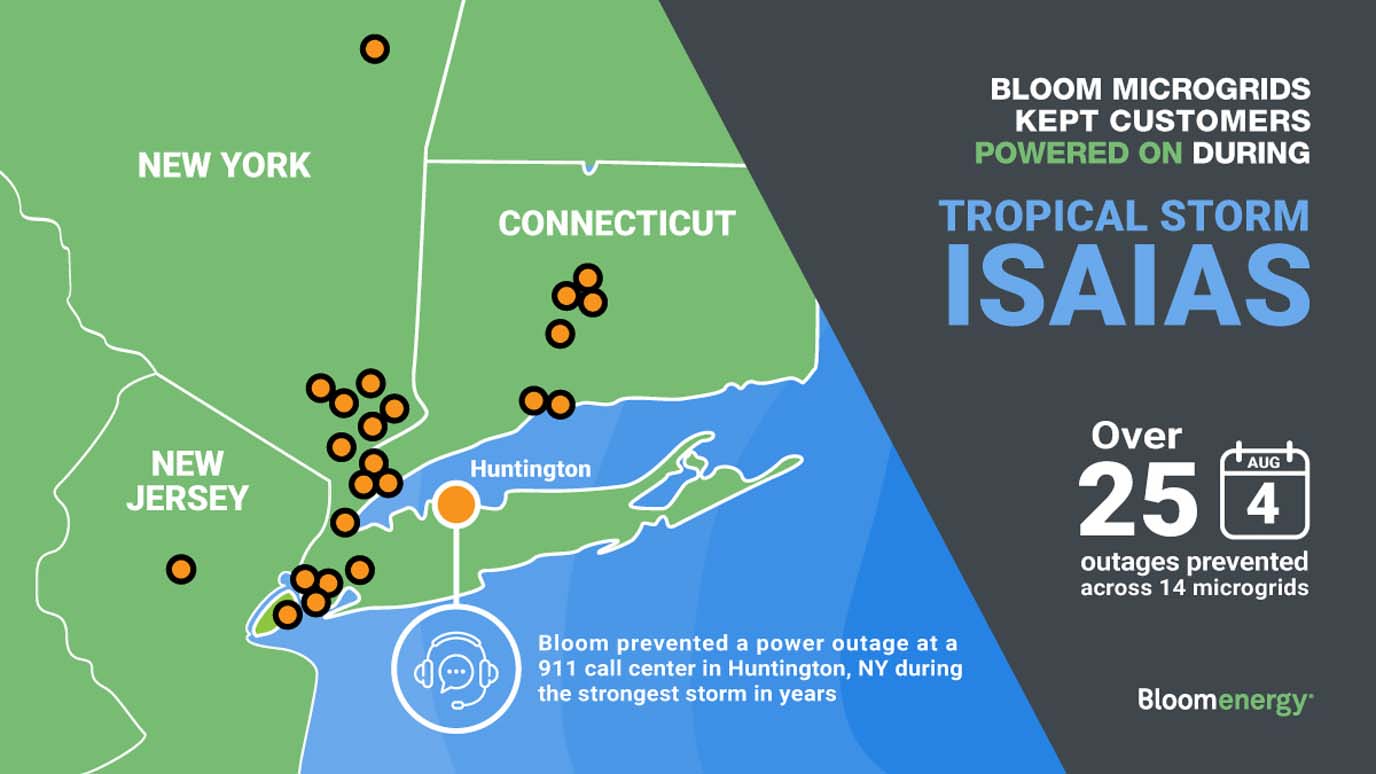
- Community Protection from Storms: After a hurricane and storm caused an 11-day power failure in the City of Hartford, Bloom installed an 800kW system to power critical facilities. These Bloom Microgrids have since provided a reliable safe haven for the community, ensuring continuous power through multiple outages.
- Keeping Businesses Open During Disasters: A business aiming to remain open during disasters to provide safety supplies to the local community sought to eliminate the need for diesel generators, which reduce air quality and are difficult to maintain. Bloom has since powered their facilities through over 100 utility outages, ensuring uninterrupted service and environmental benefits.
- Public Safety Power Shutoff (PSPS) Protection: In 2019, California utilities implemented transmission-level “public safety power shutoffs,” leaving millions of customers without power for up to a week. During an October PSPS, Bloom powered a large Santa Rosa, CA campus for 5.5 days, ensuring continuous operation amidst widespread outages.
Future Trends in Emergency Power Supply
As technology and society continue to evolve, so too will the field of emergency power. Several trends are shaping the future.
Increased Use of AI and Machine Learning
Artificial intelligence (AI) and machine learning are enhancing the management and operation of emergency power systems. These technologies can predict potential outages, optimize power distribution, and improve the efficiency of backup power systems.
Decentralization of Power Supply
The trend toward decentralization involves moving away from large, centralized power plants connected to the electric grid to smaller, localized energy sources. This decentralization enhances the resilience of the power supply, making it less vulnerable to widespread outages and facilitating the use of renewable energy. Microgrids, in particular, represent a transformative solution. By decentralizing energy production and distribution, microgrids offer communities and businesses a resilient alternative to traditional centralized power grids.
Enhanced Battery Technologies
Advancements in battery technology are improving the storage capacity and efficiency of emergency power systems. High-capacity batteries can store more energy and provide power for longer periods, making them ideal for supporting critical infrastructure during extended outages.
Sustainability
Microgrids are localized energy networks that can operate independently from the main grid, incorporating a diverse mix of renewable energy sources such as solar, wind, and hydropower. Companies like Bloom are revolutionizing the capabilities of microgrid technology with Solid Oxide Fuel Cells (SOFCs). SOFC microgrid technology represents a significant step forward, bridging the gap between traditional energy methods and the future demands for cleaner, more efficient power solutions. By integrating SOFCs into microgrids, we can achieve a more sustainable and resilient emergency power infrastructure capable of supporting critical operations with minimal environmental impact during power outages. This innovation is essential as we move towards a greener and more reliable energy landscape.
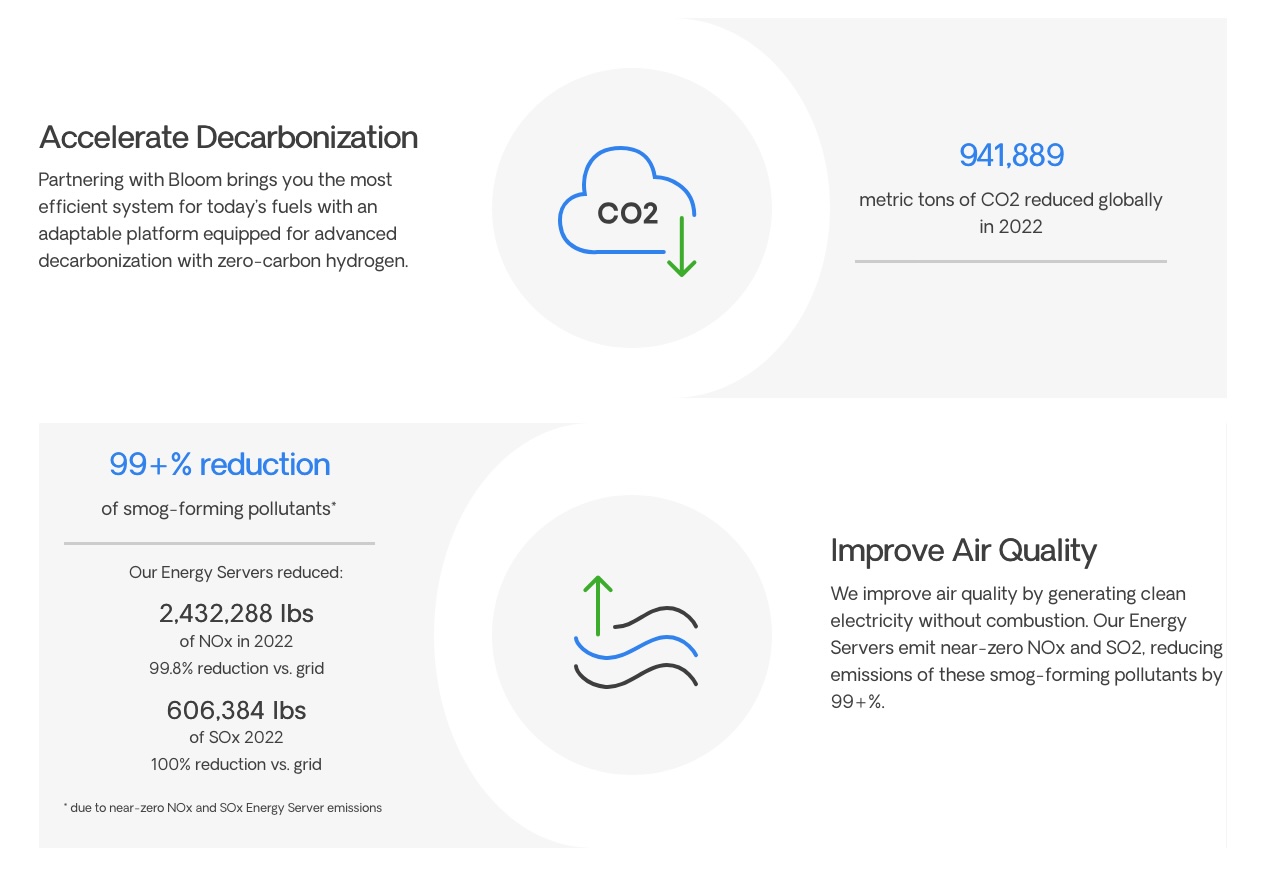
Backup power solutions are an indispensable component of modern infrastructure, essential for ensuring the continuity of operations across cities, businesses, and nations. As our reliance on technology and electricity grows, so does the importance of having robust emergency power systems in place. These systems provide a lifeline during crises, protecting public safety, maintaining economic stability, and enhancing disaster resilience.
Investing in standby power is not just about preparing for the worst; it is about ensuring that society can function smoothly and effectively, regardless of the challenges it faces. As the demand for resilient and sustainable energy solutions continues to grow, microgrids are poised to play a pivotal role in safeguarding against power disruptions and building a more resilient energy infrastructure for the future. As technological innovations continue to advance, the capabilities of emergency power systems will only improve, offering even greater reliability and sustainability.
Ensure your operations remain uninterrupted during a crisis. Contact our emergency power experts at Bloom Energy today to learn more.
Emergency Power FAQs
Q1: How do emergency and standby power systems work during a power outage?
When the main power supply fails, emergency power systems, such as generators and uninterruptible power supplies (UPS), play a crucial role in maintaining the continuity of operations. These systems are designed to automatically activate upon detecting a power outage, ensuring that essential services and critical infrastructure remain operational. Power generators, often fueled by diesel or natural gas, are capable of supplying electricity for extended periods, providing a reliable backup source when grid power is unavailable. Additionally, UPS systems offer immediate backup electrical power, serving as a bridge until generators start and stabilize. This seamless transition between power sources helps minimize downtime and prevents disruptions to vital functions. But sometimes, this isn’t the more environmentally conscious solution. For data centers, microgrid energy technology produces exceptionally efficient and environmentally friendly power, boasting versatility in fuel usage and resilience against future energy challenges. By harnessing renewable energy, organizations can reduce their carbon footprint, mitigate environmental impact, and ensure a more sustainable energy future.
Q2: How are microgrids the solution for protection against grid outages and extreme weather disruption?
Microgrids, such as Bloom’s fuel cell platform, offer a solution for protection against grid outages and extreme weather disruption by providing reliable and resilient power supply. Bloom’s fuel cell microgrid technology has proven effective in safeguarding facilities through thousands of power outages, ensuring continuous operation even during emergencies. These microgrids generate highly efficient and clean energy, reducing reliance on traditional grid power and mitigating the environmental impact of energy consumption. Additionally, Bloom’s fuel cell platform is fuel-flexible and future-proof, enabling organizations to navigate the transition to decarbonization while maintaining operational stability. By fixing a significant portion of electricity costs and offering scalability, Bloom’s microgrid solution allows organizations to hedge against price volatility and meet growing power demands effectively.
